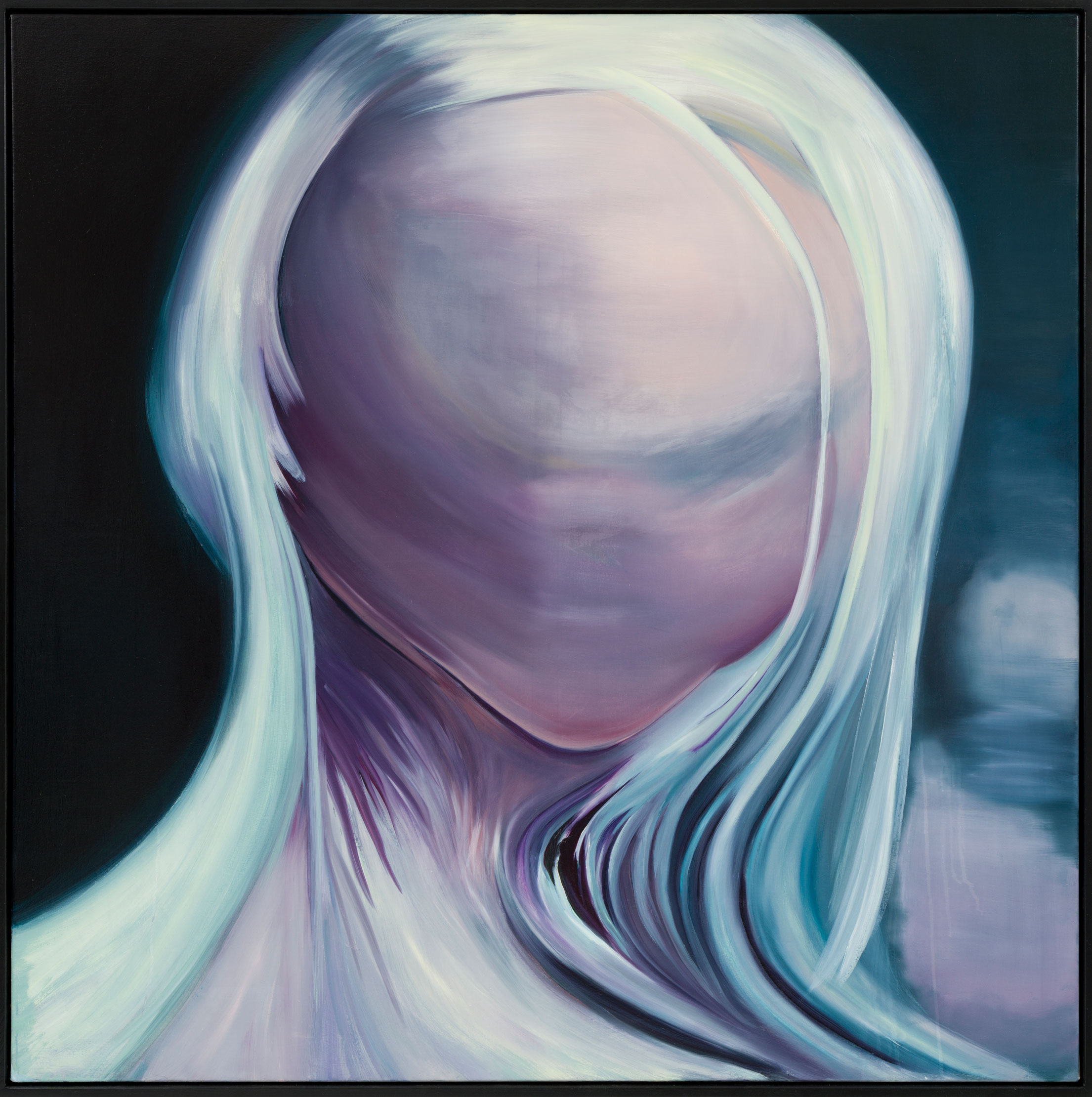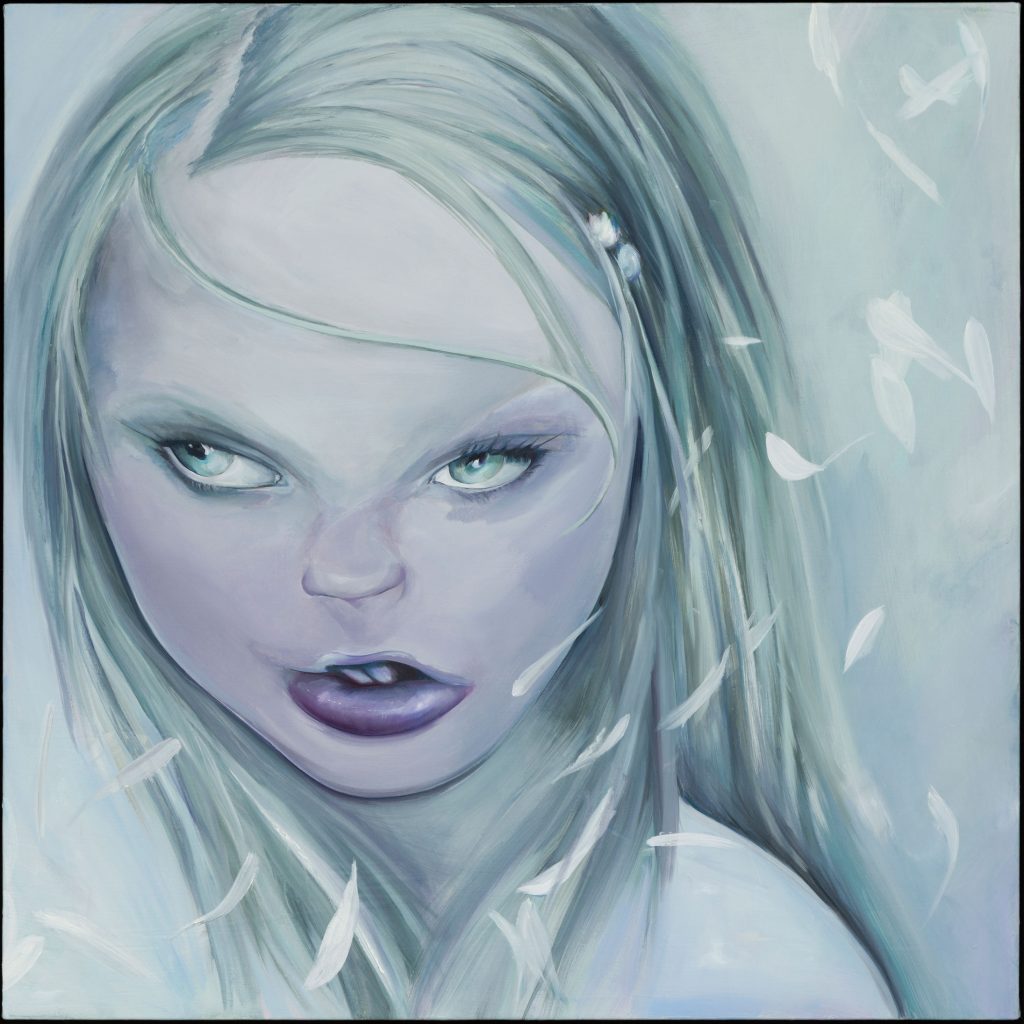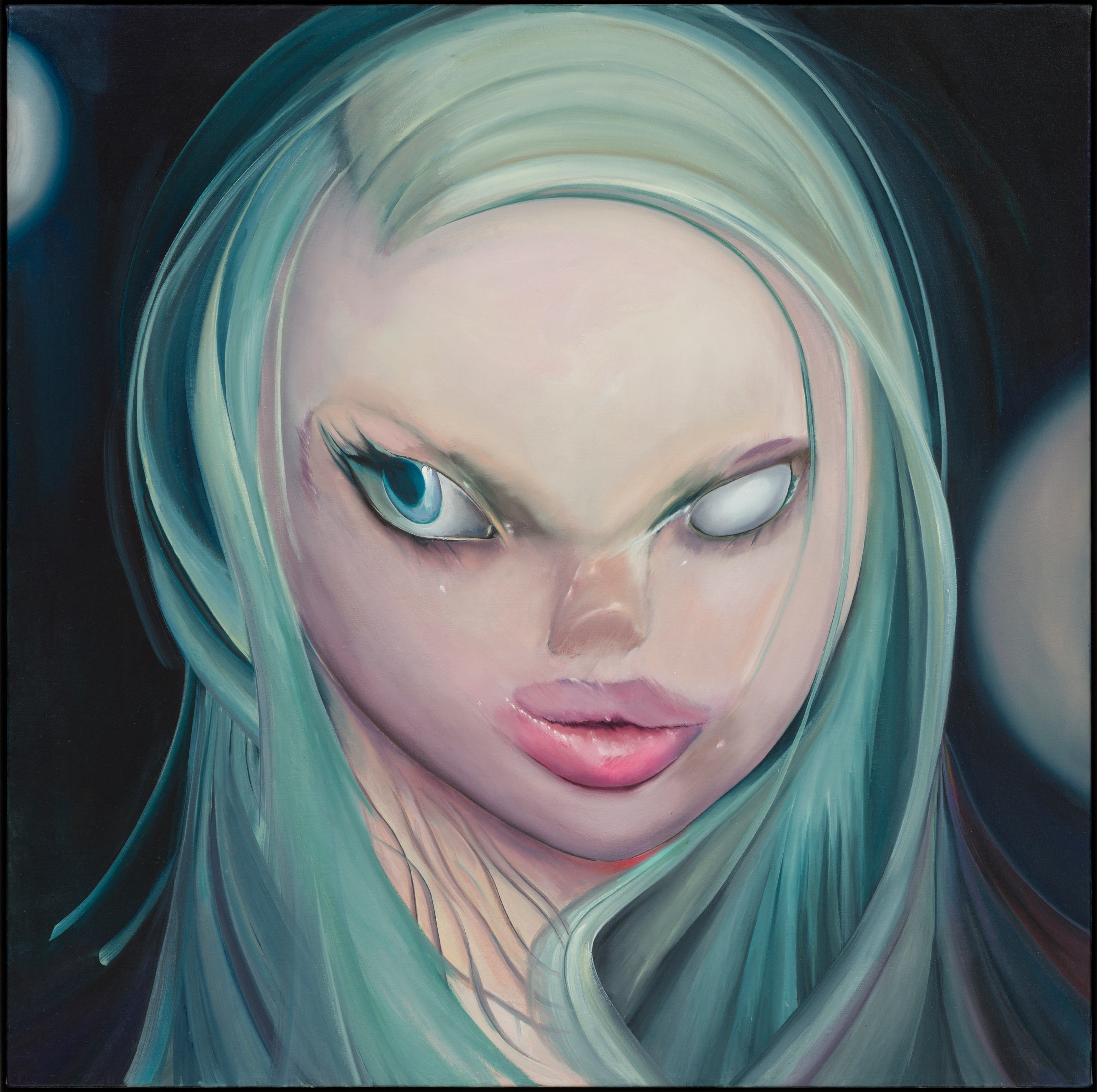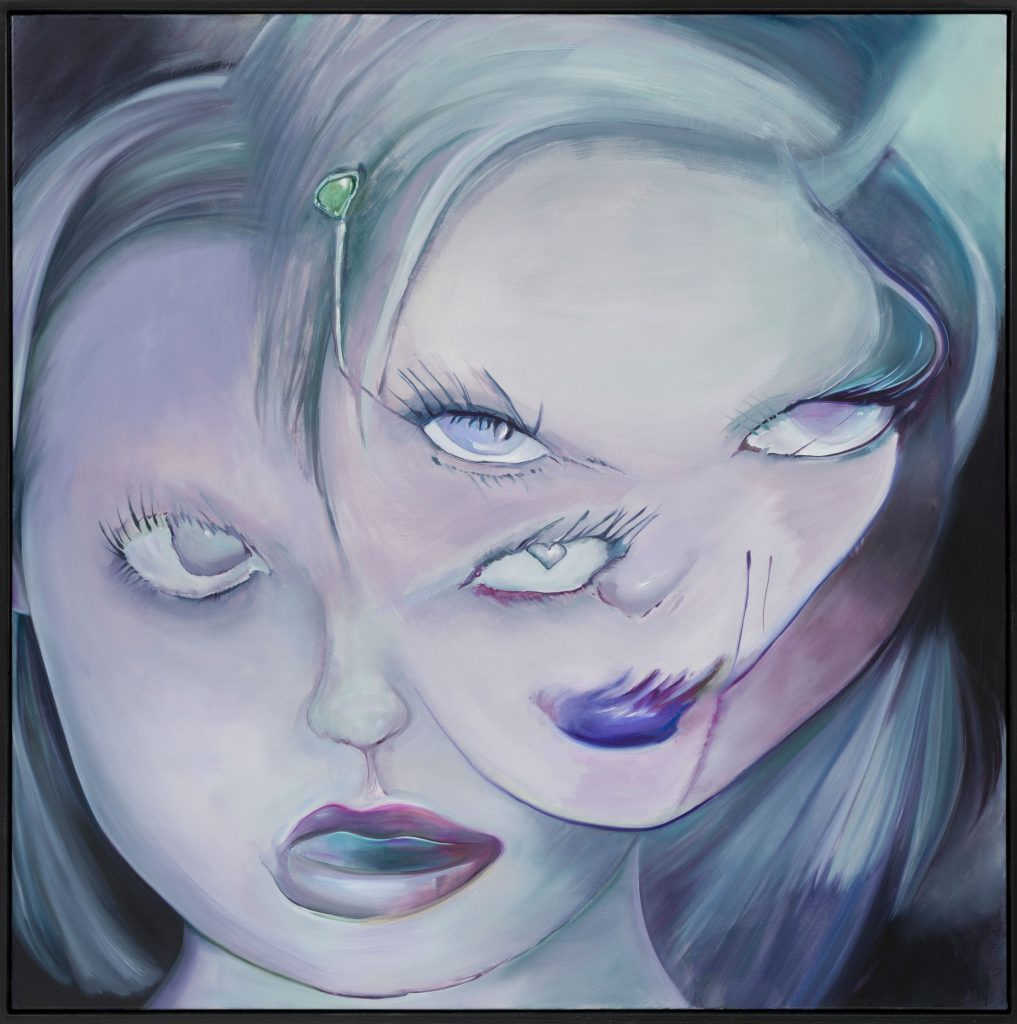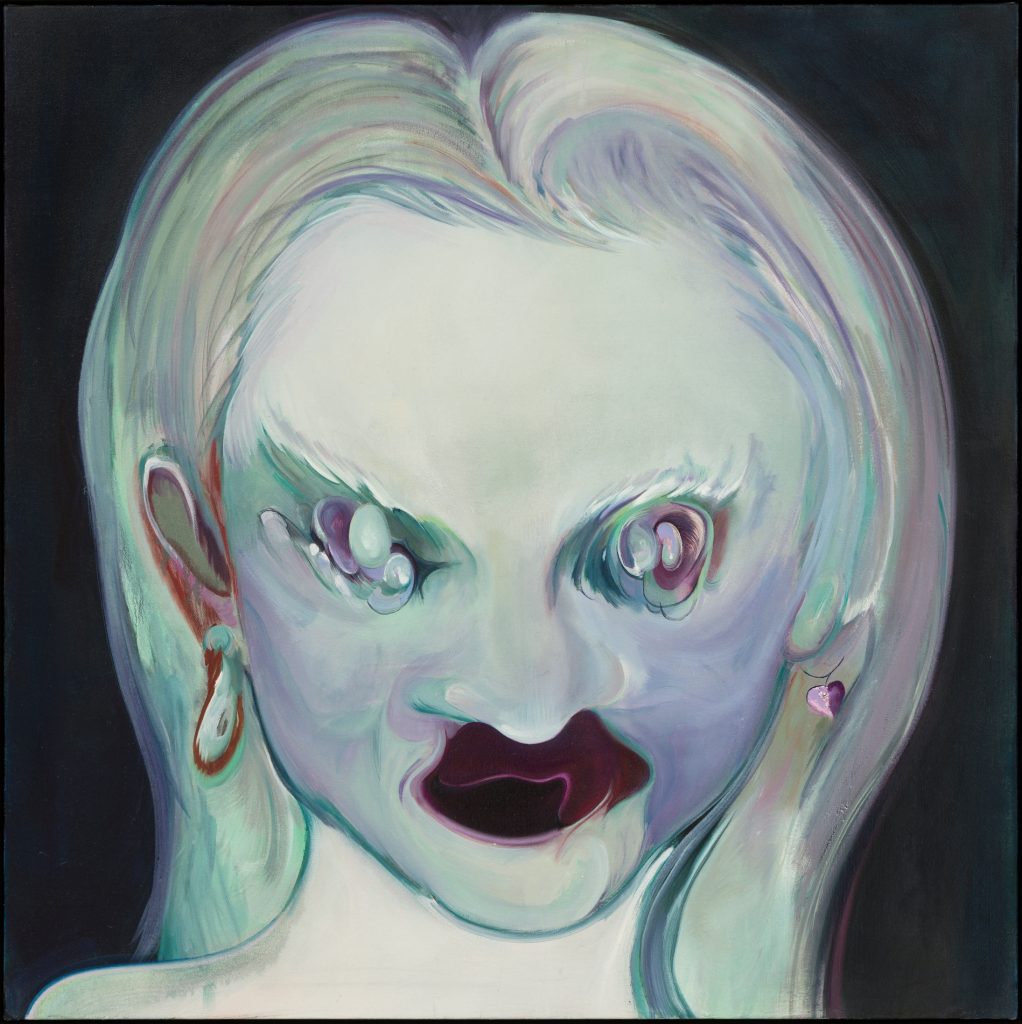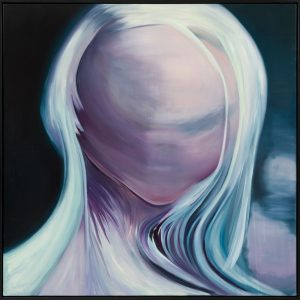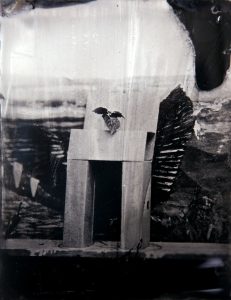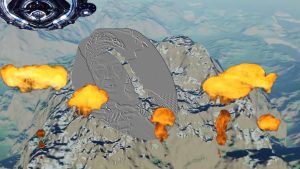
What Counts is Not The Best Living But The Most Living
Word Count: 2,952 |
Download this article
by •
011: SLEEP
with paintings by
CONNOR MARIE
Abstract: I arrived at the idea for this story after reading The Myth of Sisyphus, Albert Camus’ philosophical essay in which he tries to work through the question: “Does the Absurd dictate death?” The absurd, as conceived by Camus, arises from our repeated failure to make any meaningful sense of the world, and is, in the end, a condition of freedom. How might a girl who has become, after tragedy, alienated from the usual systems of (anthropocentric) meaning live out her life? And most importantly, what might living the absurd without acquiescing to it look like? More than a vague “live life to the full,” what I got from The Myth of Sisyphus was an appeal to feel (up) the world fully, a live life in awareness of your obscurity fully, and an invitation to accept the natural world in all its irreducibility and strangeness.
It was as if she’d been born on the sly, like she’d come out of the soil during the slimy season, when the rainfall is thick and incessant and no one is paying much attention to anyone else. When at twelve she started coming to the field behind the cul-de-sac on which she lived, a muddy, sloping piece of earth that had been put there to cover a landfill site, it suited her. She liked the spectacle of the rain-soaked grass, the water drops glinting like a million eyes. It made her mind slip relaxingly sideways.
So everyday after school, before her father got back from the warehouse where he sold TVs and tablets, she’d nose through the slat of the fence and into the scene of the landscape. Because of the field’s slanted-ness, it required a sliding down motion to get deep into, right to the bottom where the ground was most soft and pulpy, and most like her own body on a sad day.
Her mother had died in a cycle accident six years ago, after the door of a trailer carrying horses flipped open, the horses inside tipping onto her mother, but the image of this always struck her as absurd. She could never quite visualise the smiling woman in the IKEA-framed photographs of her house entangled, suddenly, under the bodies of horses on a country road. As a result, somewhere deep in her head, she’d come to divide the world cleanly between image, which gave her an idea of things, and matter, which was thing-ness itself.
Whereas her mother was all image in various poses, the field gave her something solid to feed from. She liked the way the wet soil felt around her fingers sunken-in, and the way, when it wasn’t raining already, the raindrops broke and slithered down the grass blades if she shivered. Which is not to say that the field was her mother, but that there was comfort in letting herself merge with the squelchy materiality of the field, inside all the raindrops, and blown right through with blissful, ambient unmeaning.
At school, she could just about chat along with everyone else about topics like church—the hatred of—and boys, and the way that she sang the hymns in Tuesday hymn practice was neither too loud nor too pathetic-sounding. She was even able to practise small acts of subversion, like singing bananas bananas instead of the actual words for “When I Needed a Neighbour.” But the thing that gave her weirdness away was how her eyes would rove around, even when she was speaking. It was like they had come loose in their sockets from stress.
Daisy
The field was where she could properly let go. But while she only really registered the look and experience of the ground, her father was fixated on the idea of the field as a Dangerous Toxic Wasteland. He’d say: “It might be nice to look at, but it’s rotten, it’s rotten in its core!” Sometimes he’d say this while shaking her gently by her thin shoulders. “Please stop it, you’re breathing in bad bad toxic fumes!” Her father was convinced that her body was being slowly poisoned every time she crawled, madly, insistently, into the field, and he needed her to live and be well. She was not only his precious daughter, but also the Future, and otherwise, what was it he was working all his hours for?
But she struggled with this concept because of the way her thoughts tended to settle, like jelly, in the tremulous mental fictions of the present. She knew that there was a whole plasticated belly of litter inside of the field, but this didn’t feel real to her either. Waste, she thought, was just a pile of once-upon-a-time-things. Or like a series of made-up slogans, because the types of things that went into their bin in the kitchen reminded her, for some reason, of the adverts she saw on TV. Sometimes when her mind was gone entirely, she’d speak the slogans out loud for fun, as if they were passing through her from below. “Because we know Family is where the Heart is!” she’d chirp over the rain. Or, “There’s nothing like Sharing with Friends!”
While at school she was tolerated, she was no longer allowed to hang out with the other kids on the cul-de-sac, not since the time she and a girl at number twelve convinced the girl’s little sister that she was a real-life fairy, and that if she jumped from the bannister of the stairs with true belief she would fly. All she had to do was squeeze her eyes shut and imagine her secret wings whirring at an incredible speed, lifting her up just like Tinkerbell, or like a toy drone.
That the little sister was paralysed because she happened to hit the floor with her back, cracking the delicate bone of her spine, and causing a permanently-torn nerve, was blamed on her. She had just turned eight, and her belief in flying was the result of a memory she’d constructed of her mother flying away from the horses before they could fly onto her. But the neighbours had long-considered her mind slippery in a way that was threatening, and so the tragedy only confirmed to them that she was slippery with the demonic ragged teeth of an eel.
Chloe
Instead of friends, then, she tried to connect with animal things, like the worms in the mud of the field, and like the two snowy-white dogs in the next door neighbour’s garden. She could usually catch a sight of the dogs by going to a hole in the garden fence and peeking her big, needy eye through. They were huge like polar bears, and every evening, even during the rain, they would pad around the small, square garden in concentric circles.
Sometimes, when the dogs passed the part where her eye was, she’d quickly poke her finger through, and if she was lucky she’d get a feel of the damp edges of their fur. They were so bright against the grey evening light, and so melodramatic-looking in the way that they had been bred, that it made her want to be sick. She loved all the different characters that existed in dog forms. Her favourites were the ones with the bulgy eyes, who always seemed to say to her: Are you my mother?
When she was younger she went through a phase of playing “cat” all around the house. It was right after the little sister got paralysed, and two years since her mother had gone under, and she’d go meow meow meow meow meow in a rapid, squeaking way, while stroking her body over the sides of the furniture. It placated her, to touch the insides of the house like this, because her usual relation to the furniture was purely functional and this left her feeling cold.
But it wasn’t long until the insides of the house, and rooms generally, became less real to her, partly because the predictability of the spaces dulled her awareness, and partly because of her grief. Which is why she got so much out of the field, because even though it was just a slab of land, she felt in her bones that it vibrated with a life of its own. This could have been the effect of the hundreds of different insect-lives writhing about on the surface of it, or the effect of the rain’s incessant downward motion, and what this did to the grass.
But the field in the rainfall was most useful in the way that against its indifferent drama, the bitty particulars of her horror-themed memory seemed to dissipate. As she became, in the landscape, close to a thing in matter, an almost thinking-less creature in the burst, embryonic sac of the ground, she would experience the slush beneath her expanding into a vast, unending flow. It was in this condition that her anxieties would swell into a Grand Feeling, one that had no form, only fullness, and no dogged relation to her own self and what she was or was not to blame for.
Taylor Jeanne
Except she’d only ever have about an hour of this before her father got back from work and insisted on collecting her. He’d be silent and inscrutable, picking up her soppy body, which for her age group was small, and standing her upright and correct again. She’d follow him, slowly with her head down, up the field and over the fence, and back into their cream-bricked, semi-detached house, which blended in with all the others. Then she’d change out of her sludgy uniform, and her father, who always wore a suit even though this was above and beyond his station, would change too. But for the brief time before he did so he’d appear, exhilaratingly, just like her, the bottoms of his suit trousers slimed up to the knees, and his face, after the rain, wide open and viscerally alive.
Except as soon as he stepped through the door he’d drift off again, and he’d throw their clothes into the wash as if it was a matter of life and death. For forty minutes afterwards the sound of the washing machine would reverberate around the walls like sobbing, and then there’d be quiet.
The problem was that in the house, because of its emptiness, and because her father struggled to make it homely-feeling now that her mother, who had been the whole gut and heart of his life, was gone, there was more room for the nightmares. The pale interior of the living room didn’t give out “safe” and “cosy”: it had only a white leather sofa, a TV on a table, and a round grey rug that lay in the centre like a puddle.
Even on good days, when she and her father would sit silently on the sofa together with something playing on TV, she’d feel the static pressure of a bad memory pushing against the back of her mind. And if someone started shrieking on the TV, which happened often on game shows where the winners had to emote happiness, the memory would suddenly pierce, clear as crystal, into the soft insides of her brain.
The little sister’s screaming had been a hollow cat-like noise of pain, and the memory of it always appeared to her now in the form of a hollow black mark, a mouth fixed, permanently, in a blank O. This memory had also merged somehow with the confusing image of her mother under the horses, giving the image sound.
On occasion, her father would turn to her on the sofa and out of nowhere ask, “So how’re you?” He’d ask it in a formal way, but he’d also have his eyebrows raised as if he was scared about her answer. So she’d reply with equal formality, evading the heart of the question, and staring down at the round grey rug. If it was up to her, she would have no language, except maybe for the language of crying, as well as other, vital languages of the animal body.
Laila
But mostly her father didn’t say much at all. And she’d learnt not to disturb him, because sometimes, when she took her secret glances at him, she’d see his eyes were flicking side to side, like he was orientating himself deep inside a different scene.
At night she’d lie face-up in her bed, and if she couldn’t sleep, she’d study the wood-chipped wallpaper that wrapped around the room. The shape of her body abstracted under the duvet cover looked a bit to her like a wood-chip in wallpaper too, or like a worm. Sometimes, she’d wonder whether there was anything that separated her, particularly, from the worms that moved and contracted in the whole slop of the field, and which had begun to mass in the funnels of her dreams too. The worms would repeat themselves, become self-generating, and they were neither repulsive nor alluring to her, but part of that great plane of thing-ness that she felt herself to be inextricably a part of. But to her father, she believed, she was just strange.
Yet there was one time in the field when her father’s general weariness seemed to shift, all of a sudden, into something else. As he approached her, becoming more and more like a creature from the soil, she saw that he was laughing, his whole face was stretched open dramatically, and he was gulping as if he’d woken up into a body of water, the bliss being that he could still breathe.
And when he got to her he fell onto his knees and shouted over the rain: “Have you seen these worms?!” gesturing wildly to the ground from which hundreds had risen in the wetness. “They’re moving in slow motion! No, no, that’s not it, the whole world has gone slow!”
Then he’d looked straight at her and said desperately, “Is that what you feel?” She was so happy that she just beamed at him, her face glistening, and her hair streaked all over it like slugs. Her father had held her head, then, and cried, “Why do you do this?! What are you doing?” but because he was still laughing she knew she wasn’t expected to give an answer, and for this reason she could laugh with him and their laughter was an ecstatic expression of that moment. By then the rain seemed to be moving upwards, and their pain was bubbling up too, turning, briefly, into a shared insistence for joy.
Paintings by CONNOR MARIE
When I walk into a store, or look at a collection—of images, or avatars, or beauty products—I’d most like to see individual types with variable qualities. When I watch a K-Pop girl group like BLACKPINK dancing and singing in perfect yet differentiated synchronicity, I feel the existence of peace and reason, harmony and symmetry, because they are all equally different, thus equally the same, like four petals on a daisy. When I see five different flavors of the perfect-girl perfume line Daisy Marc Jacobs at Sephora, I feel the same. There’s Daisy Black Edition (2008), Daisy Pop Art (2010), Daisy Sorbet (2015), Daisy Twinkle (2017), and Daisy Skies (2022). And I want to collect them all. This is more or less what Kant says about beauty (that it’s the relaxing sensation of the mind playing upon the symmetrically-spinning-out petals of a pretty white flower).
But Connor’s collection of girls gives me an ugly feeling … Connor’s girls don’t give the taxonomic pleasure of complementary choices (blonde with blue eyes, redhead green eyes, brunette black eyes), but the nausea of ONE (option, girl, individual) that’s been smeared across a spectrum. These eight girls do not contain multitudes, nor are they diverse. Should you see an opalescent rainbow, it’s only because a pure, sick whiteness has hallucinated colors into itself: Pepto Bismol-pink, violet, #7FFFD4 aquamarine (tell-tale symptoms of girlhood!). Should they appear multiple, it’s only because a single, perfect girl has been repeated to the point of mutation. ONE girl, infected with herself and pipetted into eight differently sized, treated and heated Petri dishes—much more cruel than a rainbow: an ombré of unequal individuation. And maybe that’s good; equality is such an illusion! We know: in real life, there IS a perfect girl, and there isn’t really more than one of her.
– Olivia Kan-Sperling, for Lubov Gallery, May 2022
LAURA LYNES writer
Laura Lynes is a writer living in London. Her writing has appeared in publications including Lighthouse, Litro Magazine and SAND Journal. She has been shortlisted for the London Magazine‘s Short Story Prize and received an honourable mention in the Berlin Writing Prize.
CONNOR MARIE artist
Connor Marie (b. 1992) lives and works in New York, NY. She received her BFA from Pace University in 2015 and her MFA from Virginia Commonwealth University in 2021. Recent solo exhibitions include Ava, Chloe, Blair, Nicole, Lubov, New York (2022); Cloaca Palace, The Anderson, Virginia (2021); A Mosquito’s View, FAB Gallery, Virginia (2020); and Stirring in the Mantle, Motel, New York (2016). Her work has been included in group exhibitions at Night Gallery, King’s Leap, Kimberly Klark, Allen & Eldridge, and Page NYC.
PAINTINGS (2022):
Marla (Cover image). Oil on canvas. 60 x 60 inches.
Daisy. Oil on canvas. 36 x 36 inches.
Chloe. Oil on canvas. 36 x 36 inches.
Taylor Jeanne. Oil on canvas. 60 x 60 inches.
Laila. Oil on canvas. 36 x 36 inches.
© Copyright for all texts published in Stillpoint Magazine are held by the authors thereof, and for all visual artworks by the visual artists thereof, effective from the year of publication. Stillpoint Magazine holds copyright to all additional images, branding, design and supplementary texts across stillpointmag.org as well as in additional social media profiles, digital platforms and print materials. All rights reserved.
